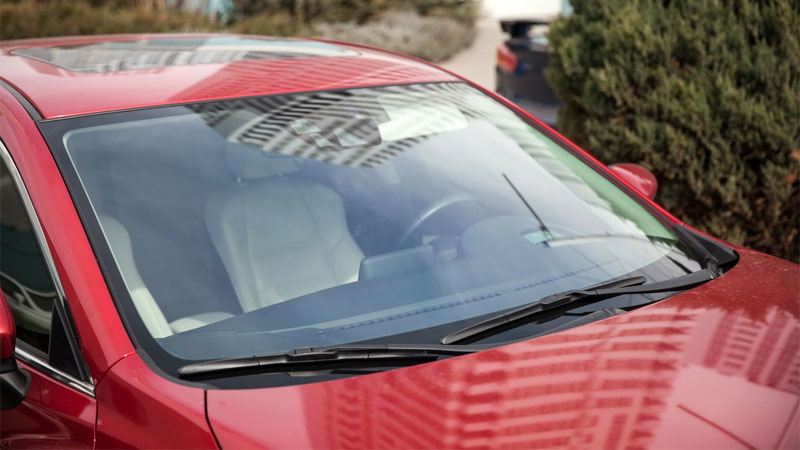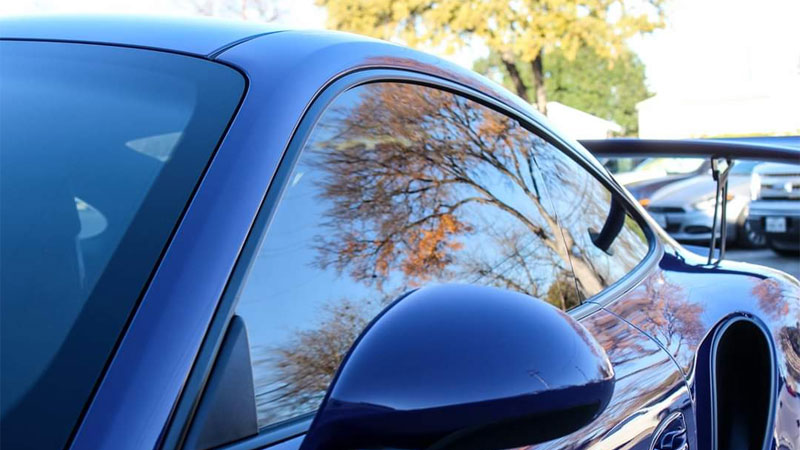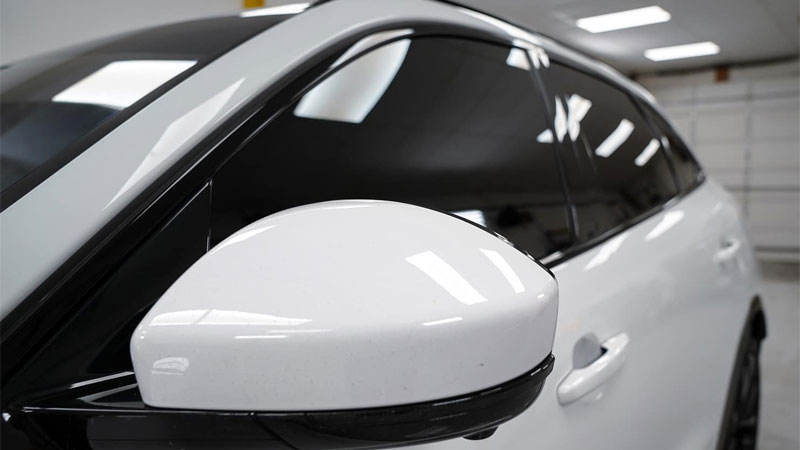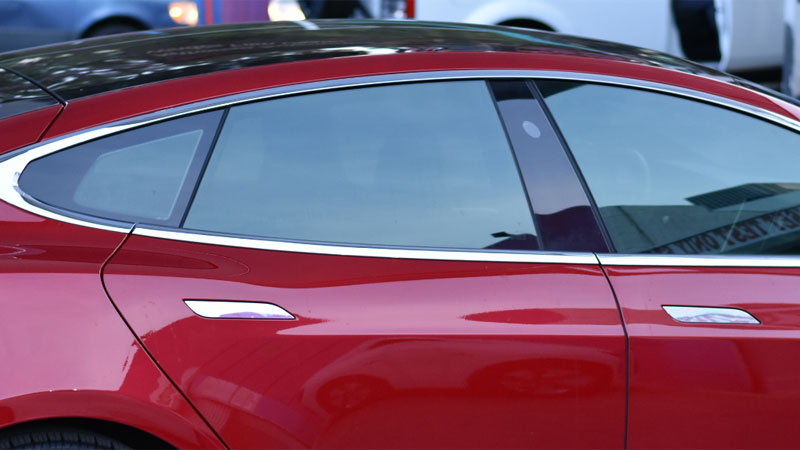Back in the 1980s, cars and vans began to employ darker window tints as a means of boosting privacy and adding a little more insulation to the single-pane windows.
Gone were the days of having to hang actual curtains in your station wagon or van, and the improved affordability meant you could have a cool ride without breaking the bank. Even better, the original dyed tint option of yesteryear had been refined to do more than simply look cool.
Nowadays, many cars include tinted windows right off the assembly line as an option, but there’s a growing demand for adding window tint to existing vehicles or those manufactured without tinted windows.
Of course, there are also a lot of regulations which prevent manufacturers from simply tinting the windows of every car on the assembly line, and it’s too expensive to provide the same glare protection strip on all windows that many windshields now include by default.
So let’s say you’re in the market to get your vehicle’s windows tinted. It might surprise you to find there are actually several different options, each with their own advantages and disadvantages. Today, we’ll take a look at all six options currently available, as well as what makes each one stand out among the others.
See Also: What Is Safety Glass and How Does It Work?
Types of Window Tint
1. Carbon
Easily the most complex of all tint types, carbon tint employs hundreds of micro-layers of polymer and carbon. This creates a smooth, dark matte finish that provides excellent UV protection.
This makes it one of the best choices if you’re worried about fading within the cabin. And speaking of fading, carbon tint won’t fade over time like dyed tint.
However, it’s also one of the best when it comes to insulation. This means the cabin stays cool in the summer and warm in the winter. The darker tint greatly reduces glare and there’s no interference with electronics. Unfortunately, the quality comes at a cost, and this is one of the most expensive options out there.
2. Ceramic
As crazy as it sounds, ceramic tint is actually the best option out there overall. There are only three layers to this tint, with the ceramic layer found between an adhesive layer and a protective topcoat. But just what does ceramic do that makes it so great?
The middle layer contains ceramic particles, which are so tiny that they won’t affect visibility from inside the cabin. From the outside, the smooth matte finish doesn’t provide as much privacy as other options, but it does provide superiority in other aspects.
For example, ceramic tint won’t affect electronics and is nonconductive. This means it’s the best insulator and also superior at protecting your upholstery from the fading effects of UV light. In fact, these effects are twice as powerful as dyed and hybrid tints. Best of all, ceramic tint won’t fade over time, greatly reduces glare, and makes windows shatter-proof.
The only real disadvantages to ceramic tint are the price and privacy. It’s more expensive than any other option, which means it might be out of your price range. Likewise, this won’t be the best choice if your goal is privacy.
However, if you want the tint for protection against the elements and improved window durability, this is definitely an option worth saving up for.
3. Crystalline

You don’t hear much about this type of window tint, which is a shame. In fact, a lot of reviews, lists, and retail outlets don’t even consider this to be a window tint! However, it’s technically still a tint, so let’s have a look at what it is and why it’s so controversial.
Crystalline tint comes in four darkness levels and at its lightest (90%), it’s virtually clear!
So, the first thing you’ll notice with a 90% crystalline tint is the fact that you don’t notice it. This is because the multiple layers are designed specifically to be transparent. While this lack of opacity might suggest it isn’t a window tint, the other qualities crystalline tint provides allows it to fit the definition in every other way.
The crystalline tint layer provides excellent protection against heat and UV rays. Unfortunately, opacity is often what people link to these qualities, so there’s a lot of debate on whether or not this type of tint actually works.
The good news is that this is perhaps the most extensively tested type of window tint out there and there’s little doubt in the scientific world that they’re effective as a result.
Crystalline window tint isn’t for everyone. If you value your privacy, this is a very poor choice. However, if you like having clear windows or live in a state where there are regulations that prohibit the use of window tint on some or all windows, this is an excellent option to give you the protection without obscuring visibility from inside or outside of the cabin.
4. Dyed
This is perhaps the most cost-effective way to tint car windows if you’re just going for a look. The film has dye sandwiched between an adhesive layer and a protective polyester coating. Whether you’re looking for the darkest possible tint or just something cheap that can still do the job, this is an excellent choice.
Your window (and the tint) is protected from scratches, thanks to the top coating, but there are some limitations. For example, the dye will slowly fade when exposed to UV light, meaning this option is best if you keep your vehicle in a garage. The fading isn’t horrible, though, and the outside goes from a deep black to purple.
Another issue is that you get what you pay for, meaning this type of tint is less durable than the alternatives. You or your installer have to be very careful when applying and take your time to avoid air bubbles, which can be quite noticeable with dyed tint.
Likewise, this type is more likely to delaminate over time, causing the layers to peel and you may end up having to remove the window tint and reinstall a better product. And finally, while it does block heat, it’s not as effective as other tints.
On the flip side of this coin, the dye absorbs solar heat, meaning when the car IS sitting in the sun, you won’t have to worry about hot upholstery. It does this by absorbing the heat, then transferring it to the glass where it dissipates and is reflected back outwards.
The dye won’t interfere with electronics, which can be a problem in certain tint types. The matte finish provides excellent privacy from outside, yet still provides a good degree of visibility from within the cab. It also protects the driver from glare, which can be a literal life-saver during certain weather conditions.
5. Hybrid
When quality is your goal, it’s hard to go wrong with hybrid tint. This is a combination of dyed and metalized.
Much like the regular dyed tint, this one has three layers, with the dyed layer sandwiched between an adhesive layer and protective top-coat. The difference is that the middle layer also includes metal powder.
Thanks to this combination, you get many of the best qualities of both types while eliminating many of the problems in each. For example, the dye provides superior light blocking capabilities, while the metal creates a much smoother finish to the tint.
It’s a little lighter in tone than dyed while having a matte finish, unlike metalized. It reduces glare, blocks heat, protects against UV rays (which helps prevent fading to the cabin), is shatter resistant, and yet won’t interfere with your electronics like regular metalized film does.
In fact, the only real downside to hybrid tint is the moderate cost – which still can be seen as an advantage. Because it’s a hybrid design, it uses fewer layers and less metal than metalized tint, but the presence of metal powder does make it more expensive than dyed tint.
At the end of the day, this is one of the best choices out there if you have a bit of extra money to spend.
6. Metalized
One of the more expensive options out there, metalized tint is precisely what it sounds like. This tint has four layers: the adhesive layer, a treated UV-blocking layer, a metalized layer, and the protective top coat. This final layer protects against scratches.
What makes the metalized layer so useful is that it adds tint while also reflecting heat. Perhaps even more important, this tint actually makes your windows shatter-resistant. And because the tint comes from its metal content, it won’t fade like many other types out there.
That said, this kind of window tint comes with a huge drawback. Because there’s actual metal in the window film, it can interfere with electronics. Your phone, GPS, and even radio may start functioning like you’re in a tunnel. For modern cars which are highly computerized, the interference may even affect some onboard monitoring systems.
Another problem with this tint is that the film is necessarily thicker, and the outside is reflective. This lack of a matte finish can be quite unattractive for many vehicle owners and may also be somewhat distracting to people outside of the vehicle.
- History of the Chevrolet SSR: The Retro-Styled Convertible Pickup - Apr 25, 2024
- The History of the BMW M Coupe (the “Clown Shoe”) - Mar 26, 2024
- The History of the Ford Flex - Feb 28, 2024



